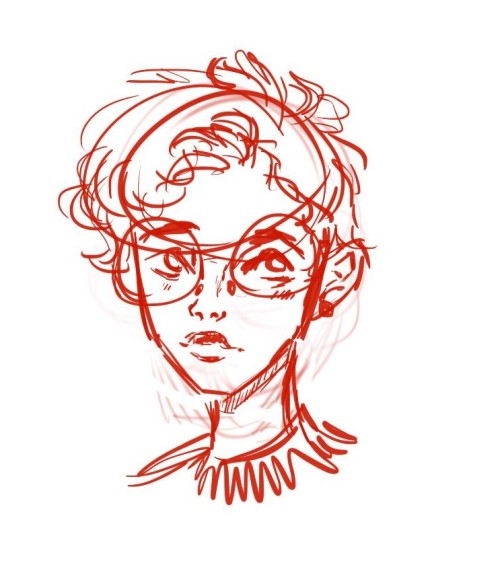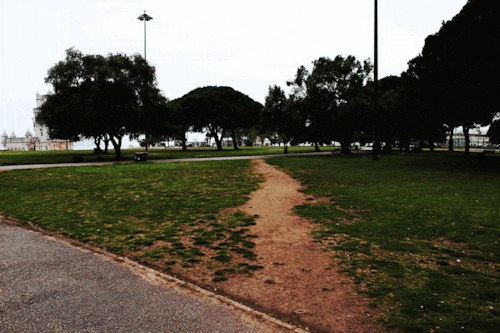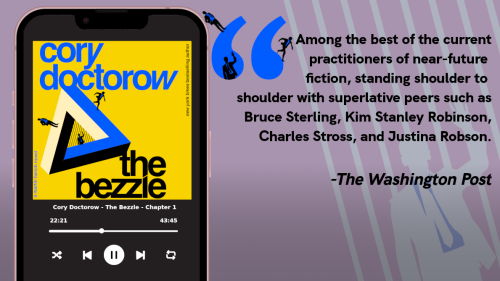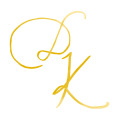The Basics Of Story Planning - Part II (Protagonists)
The Basics of Story Planning - Part II (Protagonists)

Previous Post - Next Post
“THE BASICS OF STORY PLANNING” is based in a screenwriting seminar by Dany Campos, A writer of cinema and advertising, analyst of scripts for movie producers and also independent producers and finally a scriptwriting teacher in various colleges and on his Youtube channel, and also by a seminar I gave in the writing Discord server “Whisper Of Words”.
"SOMEONE wants something with intensity and finds obstacles to get it."
The first part of our sentence is "Someone", the protagonist, the one who the story is about.
One of the problems that can be often found in first drafts or scripts, as Dany Campos says, from people who just began writing is that it isn't clear who the protagonist of the story is and this is a grave problem.
An important thing to say before we continue, why do we call them PROTAGONISTS instead of HEROES? This is to avoid the moral implication in the word Hero which by definition is:
A person who is admired or idealized for courage, outstanding achievements, or noble qualities.
Contrary to what we called the lead character (The Hero) in our previous post about the Three-Act Theory by Aristotles (and introduction to this series), our protagonists can be more dimensional in the sense that they just won't be fully "good" or "evil".
When people read the story, they won't just be observers, on the contrary, they'll experiment the story emotionally and involve themselves into it almost as if they were one of the protagonists or characters.
The author needs an instrument that connects the reader with the story that facilitates the spectator's way through the events and locations.
This is what the protagonist is:
The protagonist is the emotional connection the spectator has with the story.
The protagonist is someone who does things to get things in the story, but it isn't the only one who does things to accomplish their goals. There can be other characters who take actions for their particular goals. Now, what's the difference between these characters and the protagonist?
The protagonist is the one who the readers will feel the most identified with or the one they will have the best wishes for.
Another factor that could helps us identify the protagonist is the time the author dedicates them in the story. When there's no clear protagonist in a story, the experience will be completely different and sometimes poorer.
Now; another interrogant we may have is: the protagonist must be someone with good intentions? No. we don't have to like their goals, but what's truly important, in the spectator-author association, is to understand why they do what they do, understand the reason why they are what they are. Now, if they aren't good people, what makes us identify ourselves in them? That thing is their humanity, the expression of their weaknesses and wishes, to then understand their goals and dreams.
The same thing can happen to protagonists that aren't human. In the case of fables or movies such as Cars or Wall-E, what makes us identify with them? The human attributes they have; animals are animals but they talk, could walk on two legs. It's their humanization.
Going back to the initiative, the spectators not rationally but emotionally will feel more attached to characters who impulse action which leads us to the events that take place in the story. The one who proposes and disposes.
In as story in which we may have a wide cast of characters we want to treat as protagonists you may ask yourself: what does it matter if one is the protagonist and the other isn't and yet the story is the same? Yes, however, as an author, it's important to know who is the protagonist, since the structure is defined from the protagonist.
In many cases, when there are too many characters the story may become confusing. Some examples of this could be some works such as The Game Of Thrones, but in others, there are characters who stands out from the others. In these cases, the election of the protagonist relies on the author, who chooses to give more time to the Chosen One so it's a more perceivable protagonist and, in other cases, the author lets the spectators choose who the protagonist is since there are so many characters different from one another that it's unavoidable for the spectator to feel attached to one than the rest. And finally, there are stories in which there truly are more than one protagonist, two, three or four. It is considered that more than four (4) protagonists is almost unviable in terms to catch the spectator's attention.
The larger the number of protagonists, the larger the risk of diluting the attention.
This produces some detachment from the story. A strategy that can be used in a way to "solve this problem" can be one of separate stories with their respective protagonists in which their characters hardly interact from one story to the other.
This can be seen by Shungiku Nakamura, author of Junjou Romantica and Sekaiichi Hatsukoii, who can be seen commonly using this strategy as they have three different stories with their respective protagonists and conflict and every now and then the stories interact but will never merge as one, keeping them separate on the same timeline. Even though the stories are different, they share common elements.
In Sekaiichi Hatsukoii, the three storylines develop in the same work environment: Marukawa Publishing. Between the three storylines, The Case of Onodera Ritsu is considered as the main story while the other two, The Case of Shouta Kisa and The Case of Chiaki Yoshino may be perceived as complementary. Other cases appeared as the story developed further, but these three are the most important.
It is important to remark the fact that just because the stories do not merge into one, it doesn't mean that the characters of one story couldn't have a minor or secondary role in another storyline.
To conclude, the protagonist, who can be more than one, is who the spectator will follow through the whole story and cherish an will be the device that will let you develop your story accordingly, letting you connect the audience to your writing in an emotional level.
-
 riyasameer reblogged this · 2 years ago
riyasameer reblogged this · 2 years ago -
 riyasameer liked this · 2 years ago
riyasameer liked this · 2 years ago -
 fates-journal liked this · 2 years ago
fates-journal liked this · 2 years ago -
 unknowneimi liked this · 3 years ago
unknowneimi liked this · 3 years ago -
 sagethephantom liked this · 3 years ago
sagethephantom liked this · 3 years ago -
 osakasidelines liked this · 3 years ago
osakasidelines liked this · 3 years ago -
 0-western-0 liked this · 3 years ago
0-western-0 liked this · 3 years ago -
 valentinesinmay liked this · 4 years ago
valentinesinmay liked this · 4 years ago -
 neqmis liked this · 4 years ago
neqmis liked this · 4 years ago
More Posts from Daintykeith
Hi, I’m Keith! ψ(`∇´)ψ
I’d love to add to this study of reference guide so you guys can see there are so many ways to study.
❤ Let’s have a look into this study ❤

In this one I followed @angelganev‘s guide in his youtube channel on how to do faces. As you can see, this way shows you how the lines connect into one another naturally.
To get into more detail, in this study i drew two times. The first time was drawn on red over the drawing and in black was the drawing next to it. It isn’t perfect, but it’s about learning!
I reccommend you to check his youtube channel (angel ganev’s). It’s worth your time and effort.
❤ Now, let’s have a look into this other study ❤

This is the classic side to side that takes into account the most important features of the drawing. However, you can see the photo upside down, right? This is another way of learning how to study and sketch.
Changing the rotation of our reference makes us try harder to understand what’s in the image and even more replicate it in our own style. With this in mind, you can see the big difference between the first and second sketch.
❤ And finally, let’s take a look into the final study! ❤

IT LOOKS WEIRD AND AWFUL, I KNOW. However, this is taking the “drawing over the reference” to another whole level.
I painted over the reference, trying to understand the blending and the basic coloring in black & white method. But, you know? Maybe the traditional sketching isn’t for you!
For this method I choose big round brushes and try to follow the general shape of it all, of where the eyes and hairline, of where the ears go and keep it GRAYSCALE. Why? Colors may distract you from the main purpose: PRACTICING, especially in this case because we are shading.
Blending is more of a choice, but at first it’s better to keep it rouch and the grays may eventually blend bit by bit. It doesn’t have to be perfect or exactly as the picture, feel free to change.
It doesn’t always have to be done on top of a drawing, but side to side. The drawing below was one of the results I had after painting over references, making this a HUGE improvement in my drawings!

However, the most important thing to take into account when you’re trying to learn how to study references is properly knowing what brushes you like the best for this!
As you’ve seen in the previous studies, you can see different brushes such as: soft spray, hard round, big palette soft round, and pencil brushes.
The brush you choose will give you a different result depending on what you want
Let me show you what I mean:


The first sketch has a more detailed style and rough pencil shading and gains dimension through these. The second one is a more clear structure and less shading and unrefined features through mere lines.
Do you want a clear line-art style or instead a soft blended style? It’s up to you!
Knowing your brushes will open your way to how you will study your references and being courageous to overcome your mistakes will let you learn what you need so you can improve.
I hope this is of help y’all o(* ̄▽ ̄*)ブ
How to study references
In one of my previous posts I talked about how to choose references, but I never explained what to do when you find the perfect reference. “Obviously draw it!” Well, yes but no! ( •̀ ω •́ )✧ When you first approach a reference, you obviously want to draw it, but previously it’s very important that you study your photo. And I don’t mean watching it in detail, but break it into minor concepts. Studying is very important when you first start to draw, also because it helps you to memorize the concepts that make the reference, so that in the future you might not need one!
1. Photo Reference: to be as clear as possible, I decided to do this process myself.

this is the reference that I chose, particulary beacuse of the lights and the lack of background :) What I did after choosing the ref, is breaking it into geometric shapes an straight lines.

This process doesn’t have to be detailed, it’s just a way of looking how the shapes can form a figure. The trick is to look at the lines as they are: lines. Don’t think about the whole picture, concentrate on the single line.

(please excuse the poor quality of the image, but my computer is terrible!) what I did, is taking the single structures and lines one by one and remodulate them so that I could make a (basic!) sketch of the whole thing. I did not trace, as I don’t really like to do it, but ONLY FOR STUDY PORPUSES, you can do that too.
2. Art Reference: so, this is the hard part. Or rather, the part that seems the hardest. The whole thing is: you have to study the techniques, but leave alone the initial composition, so how to do it? It’s really simple! Let me explain:

let’s say you really like this artwork, and you want to try to imitate the artist. What you want to do, is doing the exact same thing we did with the photo: break it into pieces and remodulate the whole thing.


see how i “absorbed” the artist’s style in a new way? obviously, this is only one of the ways of studying an artwork! you can study artworks on numerous levels: lights, anatomy, brushes used ecc…

How lock-in hurts design

Berliners: Otherland has added a second date (Jan 28) for my book-talk after the first one sold out - book now!

If you've ever read about design, you've probably encountered the idea of "paving the desire path." A "desire path" is an erosion path created by people departing from the official walkway and taking their own route. The story goes that smart campus planners don't fight the desire paths laid down by students; they pave them, formalizing the route that their constituents have voted for with their feet.
Desire paths aren't always great (Wikipedia notes that "desire paths sometimes cut through sensitive habitats and exclusion zones, threatening wildlife and park security"), but in the context of design, a desire path is a way that users communicate with designers, creating a feedback loop between those two groups. The designers make a product, the users use it in ways that surprise the designer, and the designer integrates all that into a new revision of the product.
This method is widely heralded as a means of "co-innovating" between users and companies. Designers who practice the method are lauded for their humility, their willingness to learn from their users. Tech history is strewn with examples of successful paved desire-paths.
Take John Deere. While today the company is notorious for its war on its customers (via its opposition to right to repair), Deere was once a leader in co-innovation, dispatching roving field engineers to visit farms and learn how farmers had modified their tractors. The best of these modifications would then be worked into the next round of tractor designs, in a virtuous cycle:
https://securityledger.com/2019/03/opinion-my-grandfathers-john-deere-would-support-our-right-to-repair/
But this pattern is even more pronounced in the digital world, because it's much easier to update a digital service than it is to update all the tractors in the field, especially if that service is cloud-based, meaning you can modify the back-end everyone is instantly updated. The most celebrated example of this co-creation is Twitter, whose users created a host of its core features.
Retweets, for example, were a user creation. Users who saw something they liked on the service would type "RT" and paste the text and the link into a new tweet composition window. Same for quote-tweets: users copied the URL for a tweet and pasted it in below their own commentary. Twitter designers observed this user innovation and formalized it, turning it into part of Twitter's core feature-set.
Companies are obsessed with discovering digital desire paths. They pay fortunes for analytics software to produce maps of how their users interact with their services, run focus groups, even embed sneaky screen-recording software into their web-pages:
https://www.wired.com/story/the-dark-side-of-replay-sessions-that-record-your-every-move-online/
This relentless surveillance of users is pursued in the name of making things better for them: let us spy on you and we'll figure out where your pain-points and friction are coming from, and remove those. We all win!
But this impulse is a world apart from the humility and respect implied by co-innovation. The constant, nonconsensual observation of users has more to do with controlling users than learning from them.
That is, after all, the ethos of modern technology: the more control a company can exert over its users ,the more value it can transfer from those users to its shareholders. That's the key to enshittification, the ubiquitous platform decay that has degraded virtually all the technology we use, making it worse every day:
https://pluralistic.net/2023/02/19/twiddler/
When you are seeking to control users, the desire paths they create are all too frequently a means to wrestling control back from you. Take advertising: every time a service makes its ads more obnoxious and invasive, it creates an incentive for its users to search for "how do I install an ad-blocker":
https://www.eff.org/deeplinks/2019/07/adblocking-how-about-nah
More than half of all web-users have installed ad-blockers. It's the largest consumer boycott in human history:
https://doc.searls.com/2023/11/11/how-is-the-worlds-biggest-boycott-doing/
But zero app users have installed ad-blockers, because reverse-engineering an app requires that you bypass its encryption, triggering liability under Section 1201 of the Digital Millennium Copyright Act. This law provides for a $500,000 fine and a 5-year prison sentence for "circumvention" of access controls:
https://pluralistic.net/2024/01/12/youre-holding-it-wrong/#if-dishwashers-were-iphones
Beyond that, modifying an app creates liability under copyright, trademark, patent, trade secrets, noncompete, nondisclosure and so on. It's what Jay Freeman calls "felony contempt of business model":
https://locusmag.com/2020/09/cory-doctorow-ip/
This is why services are so horny to drive you to install their app rather using their websites: they are trying to get you to do something that, given your druthers, you would prefer not to do. They want to force you to exit through the gift shop, you want to carve a desire path straight to the parking lot. Apps let them mobilize the law to literally criminalize those desire paths.
An app is just a web-page wrapped in enough IP to make it a felony to block ads in it (or do anything else that wrestles value back from a company). Apps are web-pages where everything not forbidden is mandatory.
Seen in this light, an app is a way to wage war on desire paths, to abandon the cooperative model for co-innovation in favor of the adversarial model of user control and extraction.
Corporate apologists like to claim that the proliferation of apps proves that users like them. Neoliberal economists love the idea that business as usual represents a "revealed preference." This is an intellectually unserious tautology: "you do this, so you must like it":
https://boingboing.net/2024/01/22/hp-ceo-says-customers-are-a-bad-investment-unless-they-can-be-made-to-buy-companys-drm-ink-cartridges.html
Calling an action where no alternatives are permissible a "preference" or a "choice" is a cheap trick – especially when considered against the "preferences" that reveal themselves when a real choice is possible. Take commercial surveillance: when Apple gave Ios users a choice about being spied on – a one-click opt of of app-based surveillance – 96% of users choice no spying:
https://arstechnica.com/gadgets/2021/05/96-of-us-users-opt-out-of-app-tracking-in-ios-14-5-analytics-find/
But then Apple started spying on those very same users that had opted out of spying by Facebook and other Apple competitors:
https://pluralistic.net/2022/11/14/luxury-surveillance/#liar-liar
Neoclassical economists aren't just obsessed with revealed preferences – they also love to bandy about the idea of "moral hazard": economic arrangements that tempt people to be dishonest. This is typically applied to the public ("consumers" in the contemptuous parlance of econospeak). But apps are pure moral hazard – for corporations. The ability to prohibit desire paths – and literally imprison rivals who help your users thwart those prohibitions – is too tempting for companies to resist.
The fact that the majority of web users block ads reveals a strong preference for not being spied on ("users just want relevant ads" is such an obvious lie that doesn't merit any serious discussion):
https://www.iccl.ie/news/82-of-the-irish-public-wants-big-techs-toxic-algorithms-switched-off/
Giant companies attained their scale by learning from their users, not by thwarting them. The person using technology always knows something about what they need to do and how they want to do it that the designers can never anticipate. This is especially true of people who are unlike those designers – people who live on the other side of the world, or the other side of the economic divide, or whose bodies don't work the way that the designers' bodies do:
https://pluralistic.net/2022/10/20/benevolent-dictators/#felony-contempt-of-business-model
Apps – and other technologies that are locked down so their users can be locked in – are the height of technological arrogance. They embody a belief that users are to be told, not heard. If a user wants to do something that the designer didn't anticipate, that's the user's fault:
https://www.wired.com/2010/06/iphone-4-holding-it-wrong/
Corporate enthusiasm for prohibiting you from reconfiguring the tools you use to suit your needs is a declaration of the end of history. "Sure," John Deere execs say, "we once learned from farmers by observing how they modified their tractors. But today's farmers are so much stupider and we are so much smarter that we have nothing to learn from them anymore."
Spying on your users to control them is a poor substitute asking your users their permission to learn from them. Without technological self-determination, preferences can't be revealed. Without the right to seize the means of computation, the desire paths never emerge, leaving designers in the dark about what users really want.
Our policymakers swear loyalty to "innovation" but when corporations ask for the right to decide who can innovate and how, they fall all over themselves to create laws that let companies punish users for the crime of contempt of business-model.

I'm Kickstarting the audiobook for The Bezzle, the sequel to Red Team Blues, narrated by @wilwheaton! You can pre-order the audiobook and ebook, DRM free, as well as the hardcover, signed or unsigned. There's also bundles with Red Team Blues in ebook, audio or paperback.

If you'd like an essay-formatted version of this post to read or share, here's a link to it on pluralistic.net, my surveillance-free, ad-free, tracker-free blog:
https://pluralistic.net/2024/01/24/everything-not-mandatory/#is-prohibited

Image: Belem (modified) https://commons.wikimedia.org/wiki/File:Desire_path_%2819811581366%29.jpg
CC BY 2.0 https://creativecommons.org/licenses/by/2.0/deed.en
Resources for Writing Injuries

Patreon || Ko-Fi || Masterlist || Work In Progress
–
Head Injuries
General Information | More
Hematoma
Hemorrhage
Concussion
Edema
Skull Fracture
Diffuse Axonal Injury
Neck
General Information
Neck sprain
Herniated Disk
Pinched Nerve
Cervical Fracture
Broken Neck
Chest (Thoracic)
General Information
Aortic disruption
Blunt cardiac injury
Cardiac tamponade
Flail chest
Hemothorax
Pneumothorax (traumatic pneumothorax, open pneumothorax, and tension pneumothorax)
Pulmonary contusion
Broken Ribs
Broken Collarbone
Keep reading
things people do after having a nightmare that isn’t crying
struggle to catch their breath
grab onto whatever’s close enough to ground themselves in reality
become nauseous / vomit
shake uncontrollably
sweat buckets
get a headache
things people do to combat having nightmares if they occur commonly
sleep near other people so they can hear the idle sounds of them completing tasks
move to a different sleeping spot than where they had the nightmare
leave tvs / radios / phones on with noise
just not sleep (if you want to go the insomnia route)
sleep during the day in bright rooms
things people with insomnia do
first, obviously, their ability to remember things and their coordination will go out the window
its likely they’ll become irritable or overly emotional
their body will start to ache, shake, and weaken
hallucinate if it’s been long enough
it becomes incredibly easy for them to get sick (and they probably will)
add your own in reblogs/comments!
